
China
15:26, 10-Dec-2018
60 years on: Ethnic groups in Guangxi live like a family
Updated
15:18, 13-Dec-2018
CGTN
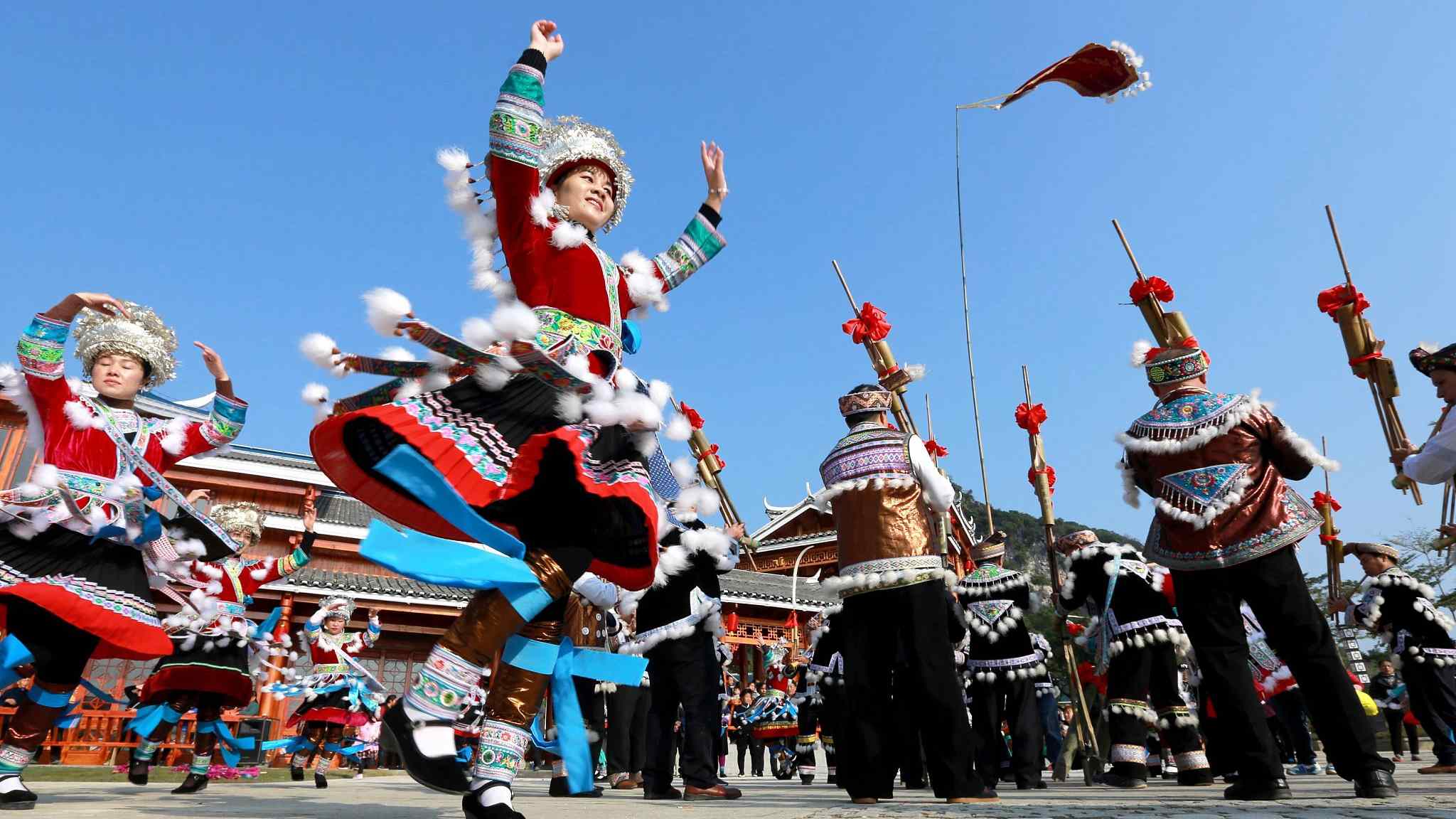
Guangxi Zhuang Autonomous Region (GZAR) in southern China has an ethnic minority population of more than 20 million, about 38 percent of the total population.
This year marks the 60th anniversary of the establishment of the GZAR, the region that has taken pride in the harmonious coexistence of its communities over the past decades.
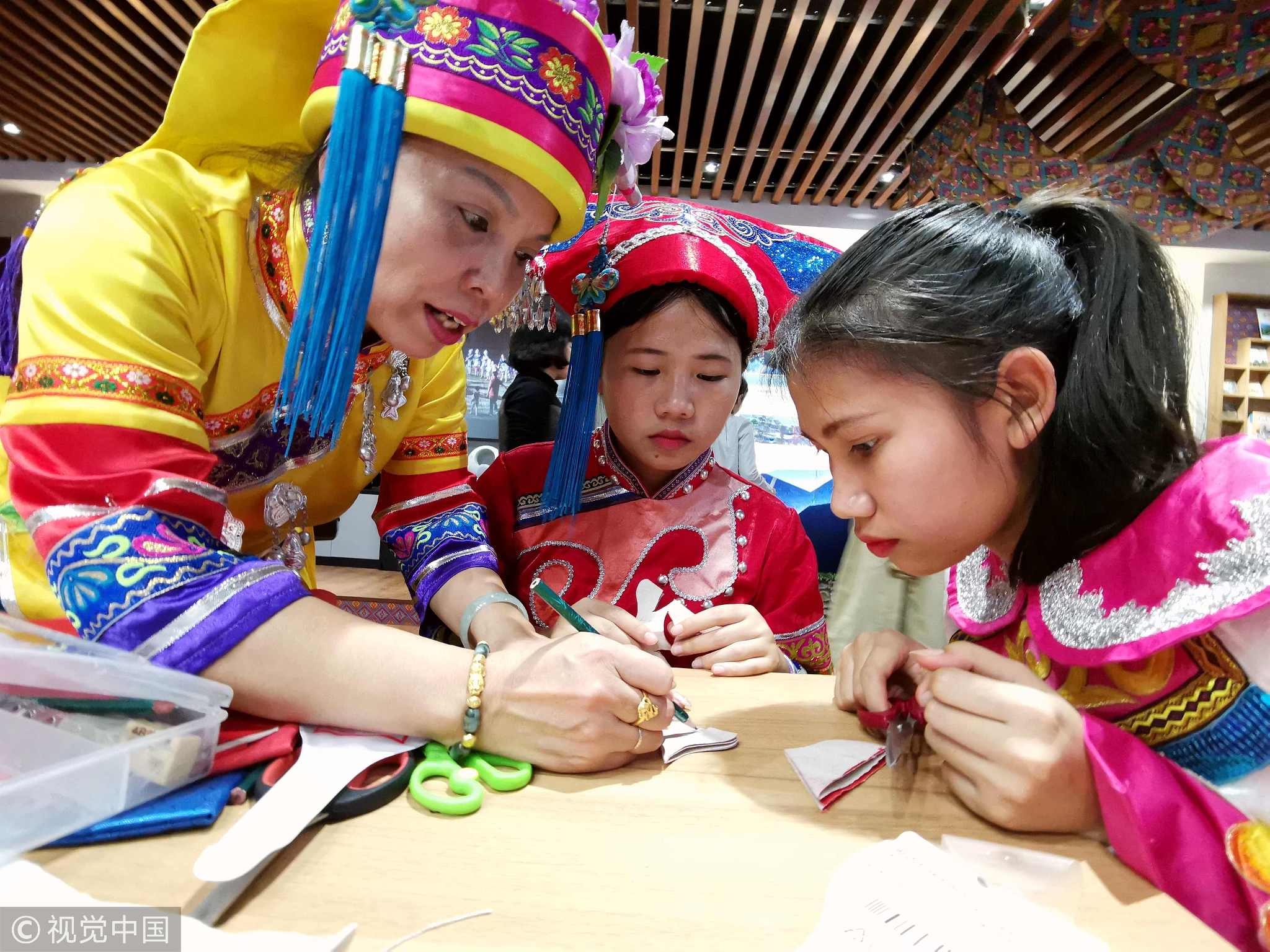
Paper-cutting artist Luo Huaqing from Mulao ethnic group teaches a traditional skill to students in Hechi, Guangxi, December 4, 2018. /VCG Photo
Paper-cutting artist Luo Huaqing from Mulao ethnic group teaches a traditional skill to students in Hechi, Guangxi, December 4, 2018. /VCG Photo
In October, a team formed by different ethnic groups in Hechi in north Guangxi won a gold medal at a local dragon boat competition, displaying the power of unity.
One of the villages in Hechi, Chenshuang Village could be a good example of integration, with seven ethnic groups including Zhuang, Miao, Yao and Maonan people living together.
People in Chenshuang Village are not only good partners but also families.
“I am Maonan people, my husband is Miao people, our daughter's cloth made by my husband's mother shows both characteristics of Maonan and Miao groups,” said Tan Lihuan, a resident in Chenshuang Village.
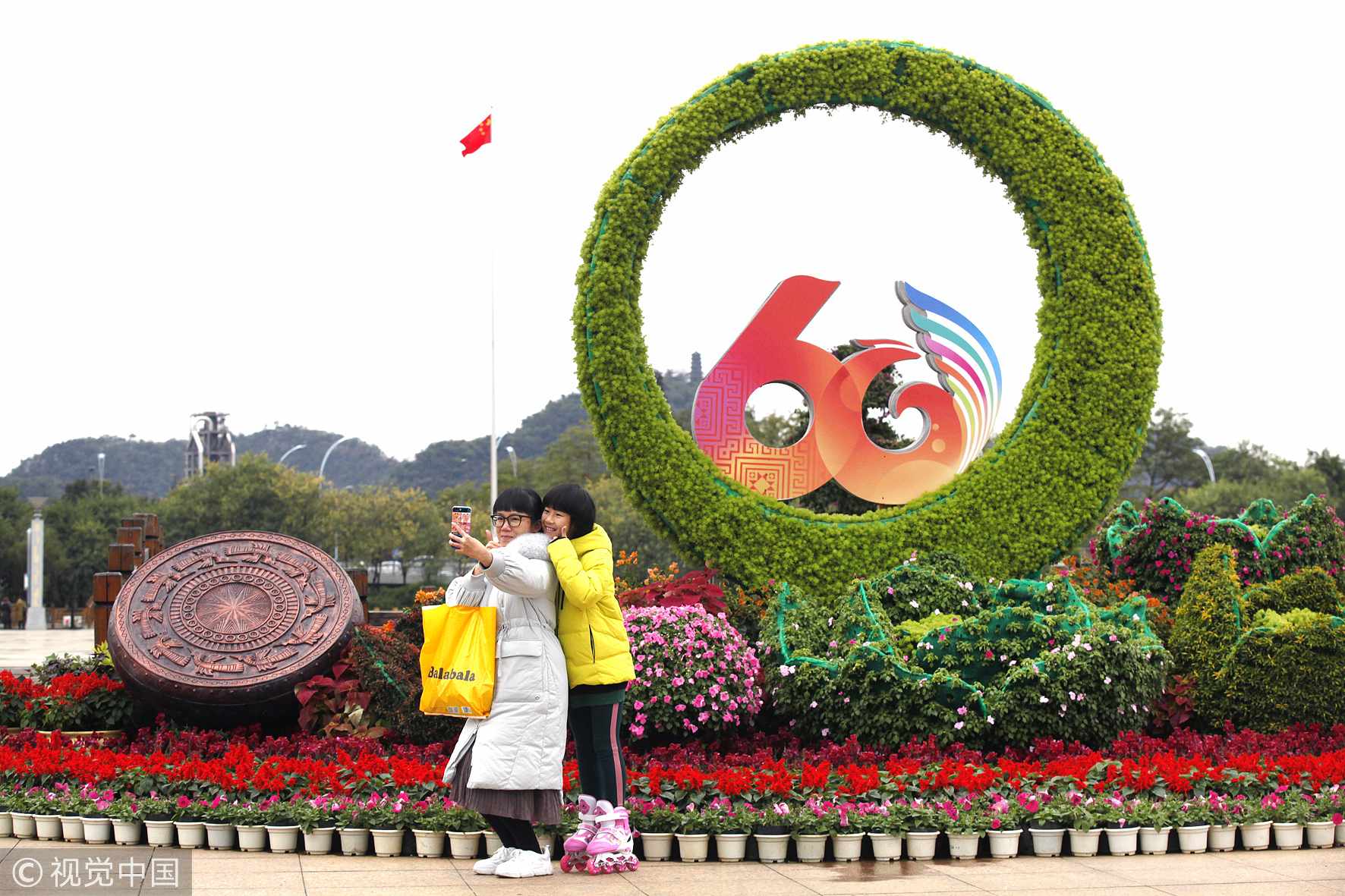
Citizens take photos in front of the decoration of the 60th anniversary of the establishment of the Guangxi Zhuang Autonomous Region, December 9, 2018. /VCG Photo
Citizens take photos in front of the decoration of the 60th anniversary of the establishment of the Guangxi Zhuang Autonomous Region, December 9, 2018. /VCG Photo
Official statistics show that the rate of families made up of more than one ethnic group reaches almost 60 percent. It is a big change because many ethnic minority groups in Guangxi seldom interacted with each other in the past.
Wei Yurong, who is from Miao ethnic group in Chenshuang Village, said he will always remember the help from local Zhuang people when his groups just moved there more than 20 years ago. At that time, local Zhuang people lent sugarcane seeds to Wei's group which helped them make a living. And in return, Miao people also share their farming experience with Zhuang people, helping both earn more money nowadays.
Similar to Chenshuang Village, Zhonghua Middle Road Community in Nanning, the capital of Guangxi, has a reputation of “home for all.” There are more than 3,800 people from 15 ethnic groups living there, and every year they celebrate both traditional Han festivals and minority festivals together.
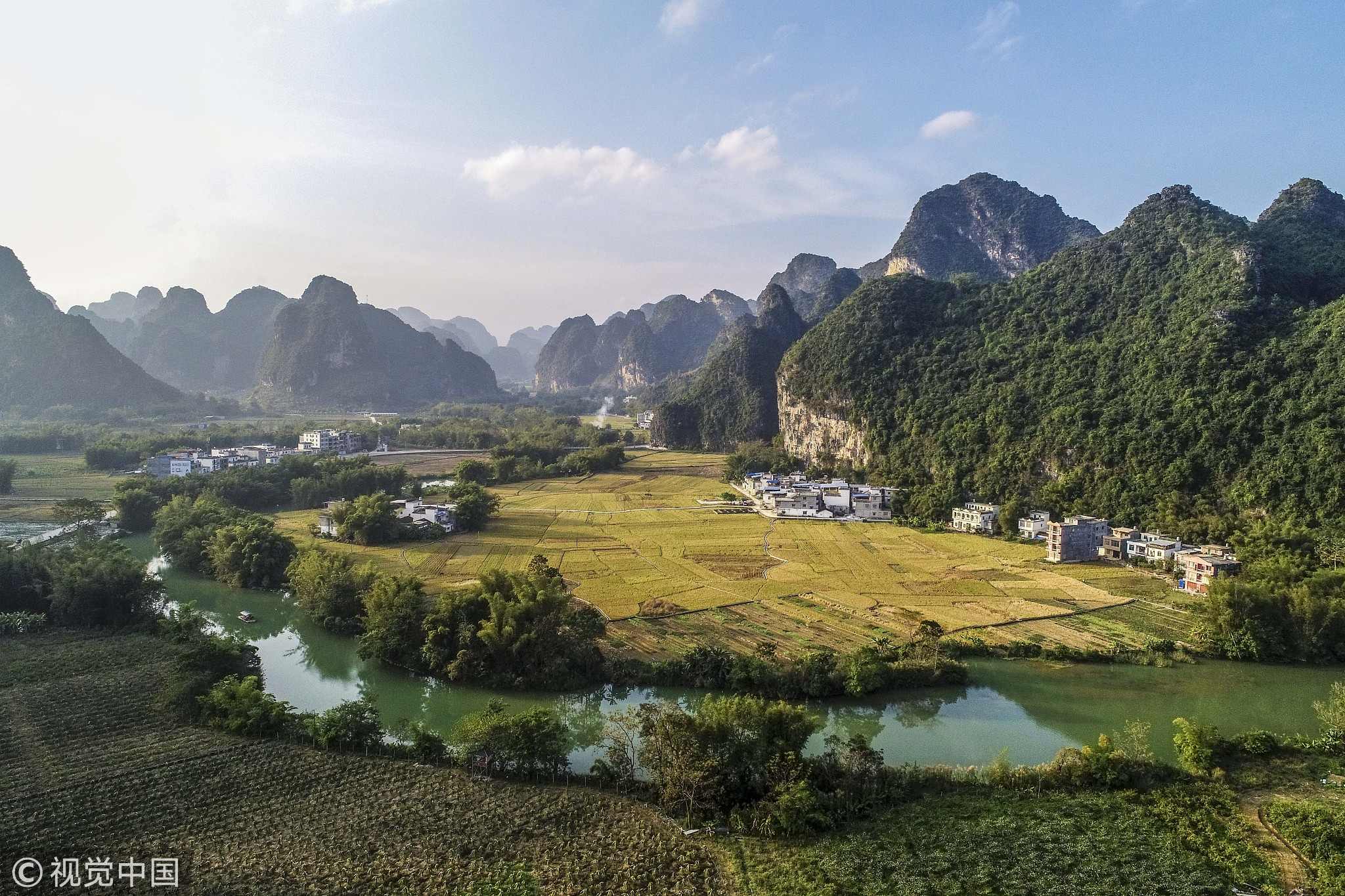
This year marks the 60th anniversary of the establishment of the Guangxi Zhuang Autonomous Region. /VCG Photo
This year marks the 60th anniversary of the establishment of the Guangxi Zhuang Autonomous Region. /VCG Photo
In order to help minorities in Nanning, the city even sets up a specialized administrative mechanism for them, named the “13456 service system.” This mechanism will provide services such as occupational training, startup business assistance, halal food supply, accommodation agreement and so on.
Nanning is an open city, where ethnic minorities come and go. Local officials said the “13456 mechanism" aims to give a chance for them to stay in the city with a promising future.
In addition to the “Nanning mechanism,” other measures for helping ethnic minorities and promoting the interactions among people are also carried out.
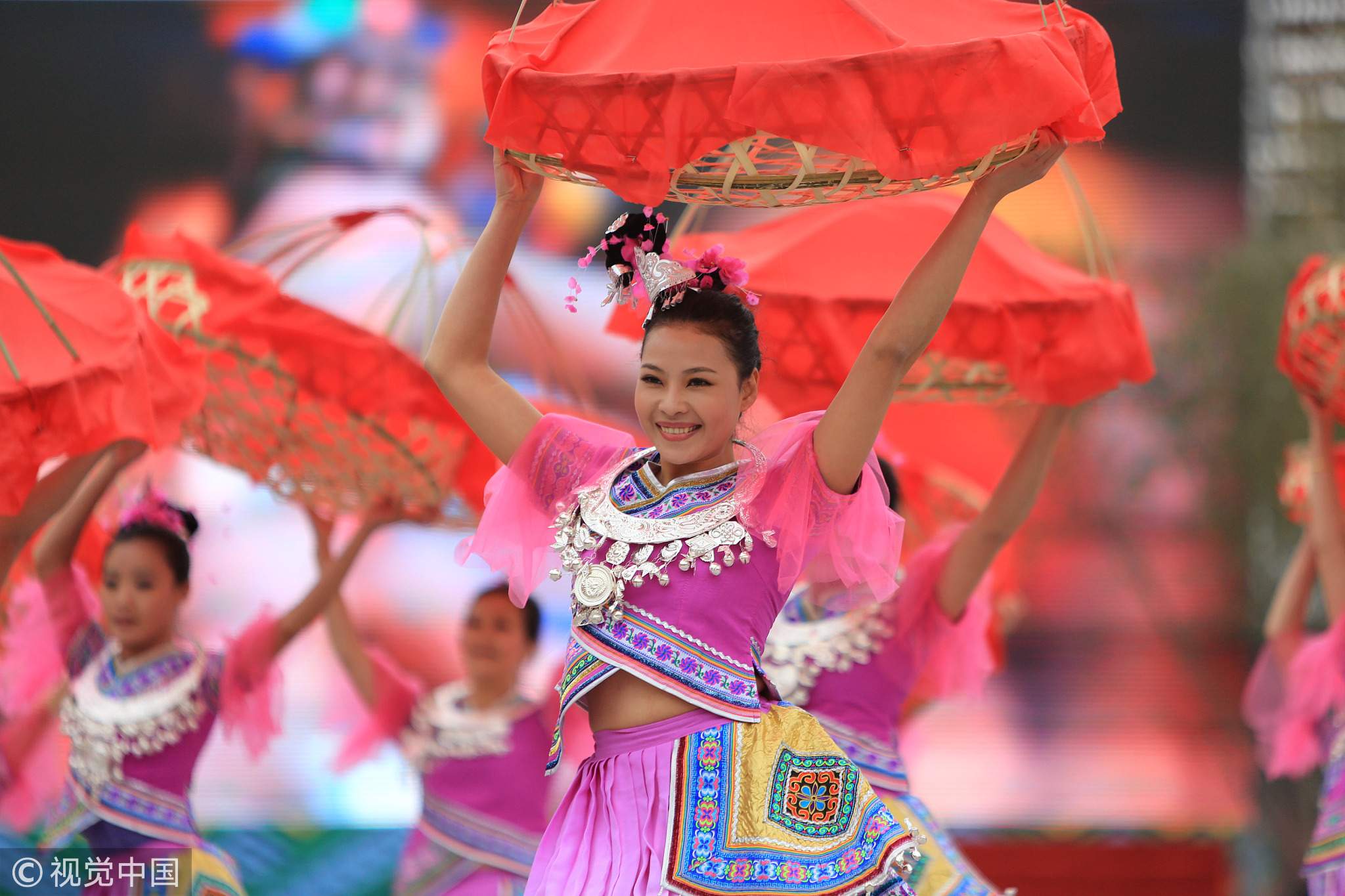
People of the Dong ethnic group celebrate the 60th anniversary of the establishment of the Guangxi Zhuang Autonomous Region, December 3, 2018. /VCG Photo
People of the Dong ethnic group celebrate the 60th anniversary of the establishment of the Guangxi Zhuang Autonomous Region, December 3, 2018. /VCG Photo
Schools for ethnic groups with living allowances, protection for ethnic culture and sports, building roads among villages…all these actions connect people from different places and groups.
In Guangxi, home to the largest number of ethnic minorities in China, "ethnic relations" plays a crucial role in its development. The government adheres the idea of equal and joint development for all groups of people. There were conflicts among ethnic groups in past history, but an equal, united and harmonious relationship has been built since the establishment of the GZAR 60 years ago.
"We love each other like a family even we are from different ethnic groups," said Wei Yurong.
(Cover Photo: Guangxi has a population of 56 million, including over 20 million who are identified as ethnic minorities. /VCG Photo)
2047km

SITEMAP
Copyright © 2018 CGTN. Beijing ICP prepared NO.16065310-3
Copyright © 2018 CGTN. Beijing ICP prepared NO.16065310-3